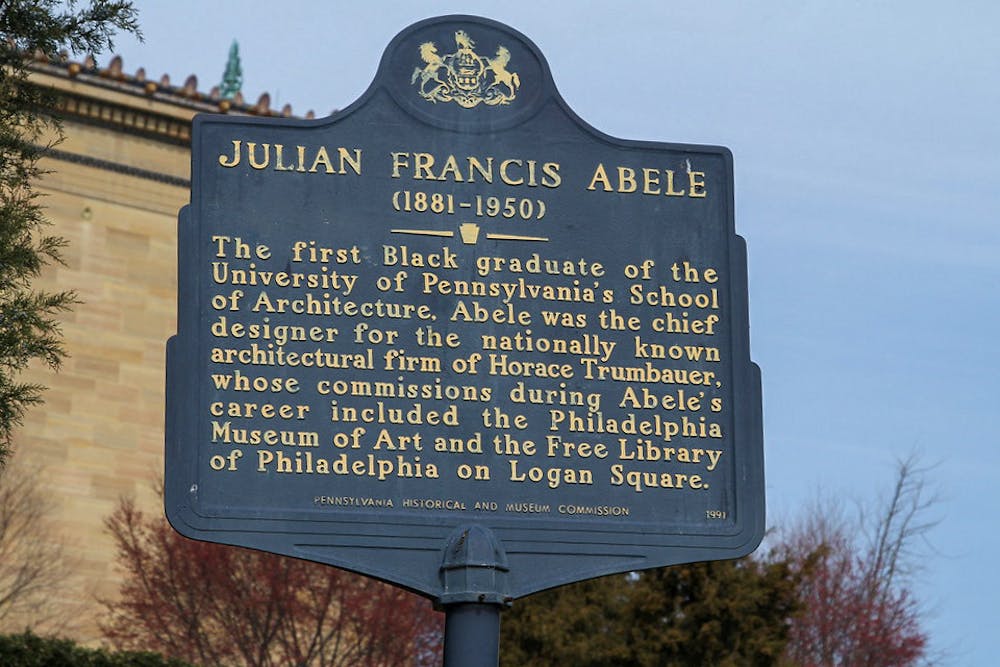
A historical marker commemorating Julian Francis Abele is located in front of the Philadelphia Museum of Art (Photo by Jim, the Photographer | CC BY 2.0).
Julian Francis Abele, the first Black graduate of the University of Pennsylvania’s architecture department, not only architecturally shaped Penn’s campus but also played an important role in the structural development of several buildings across the nations.
Abele earned his bachelor’s degree in architecture in 1902, becoming the first African American graduate from what is currently Stuart Weitzman School of Design. Throughout his life, he led projects ranging from the Philadelphia Museum of Art to Penn and other university campuses.
Abele was educated as a child at the Institute for Colored Youth in Philadelphia, along with the Brown Preparatory School. He also studied at the Philadelphia Museum School of Industrial Art.
During his time at Penn, Abele was active in various on-campus initiatives. He received multiple honors — including first-place awards in a competition for the Library Tablet and for the Conklin Memorial Gateway at Haverford College. In his fourth year, Abele served as president of the Architectural Society and as a member of the student yearbook committee.
As a student, Abele also worked as a designer at the Louis Hickman Architectural Firm, where he balanced his professional responsibilities with a schedule of afternoon and evening classes. In 1901, his success in a student design competition led to the construction of a Beaux-Arts gateway at Haverford College — one of his earliest projects.
After graduating from Penn, Abele travelled and studied throughout Europe for three years. Upon his return, Abele formally joined the Horace Trumbauer architectural firm in 1906, where he was promoted to chief designer three years later. Abele became the head of the firm following Trumbauer’s death in 1938. Despite contributing significantly to many of the firm’s most prestigious projects, such as the Philadelphia Museum of Art and the Free Library of Philadelphia, he was rarely publicly credited.
Abele also contributed significantly to the design of several buildings on Penn’s campus, including Irvine Auditorium, the Dunning Coaches Center, and Eisenlohr Hall. His role in designing Eisenlohr Hall, the official home of Penn’s presidents, was only recently confirmed after his initials were discovered on the building’s original drawings.
Beyond Philadelphia, Abele led the design of the Widener Memorial Library at Harvard University and played a central role in the design of over 40 buildings on Duke University’s campus. Although widely recognized for his contribution to these projects, Abele only listed two buildings under his own name when applying to the American Institute of Architects in 1942. He died in 1950 in Philadelphia.
The Daily Pennsylvanian is an independent, student-run newspaper. Please consider making a donation to support the coverage that shapes the University. Your generosity ensures a future of strong journalism at Penn.
Donate







